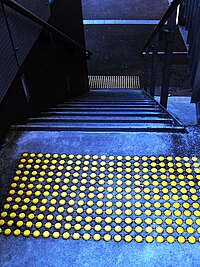
Photo from wikipedia
Multi-modal imaging may improve our understanding of the relationship between cortical morphology and cytoarchitecture. To this end we integrated the analyses of several magnetic resonance imaging (MRI) and spectroscopy (MRS)… Click to show full abstract
Multi-modal imaging may improve our understanding of the relationship between cortical morphology and cytoarchitecture. To this end we integrated the analyses of several magnetic resonance imaging (MRI) and spectroscopy (MRS) metrics within the anterior cingulate cortex (ACC). Considering the ACCs role in neurodevelopmental disorders, we also investigated the association between neuropsychiatric symptoms and the various metrics. T1 and diffusion-weighted MRI and 1H-MRS (ACC voxel) data along with phenotypic information were acquired from children (8-12 years) with various neurodevelopmental disorders (n=95) and healthy controls (n=50). From within the MRS voxel mean diffusivity (MD) of the grey matter fraction, intrinsic curvature (IC) of the surface and concentrations of creatine, choline, glutamate, N-acetylaspartate and myo-inositol were extracted. Linear models were used to investigate if the neurochemicals predicted MD and IC or if MD predicted IC. Finally, measures of various symptom severities were included to determine the influence of symptoms of neurodevelopmental disorders. All five neurochemicals inversely predicted MD (all puncorrected<0.04, β=0.23-0.36). There was no association between IC and MD or IC and the neurochemicals (all p>0.05). Severity of autism symptoms related positively to MD (puncorrected=0.002, β=0.39). Our findings support the notion that the neurochemicals relate to cytoarchitecture within the cortex. Additionally, we showed that autism symptoms across participants relate to the ACC cytoarchitecture.
Journal Title: European Neuropsychopharmacology
Year Published: 2018
Link to full text (if available)
Share on Social Media: Sign Up to like & get
recommendations!